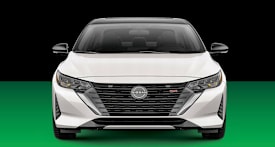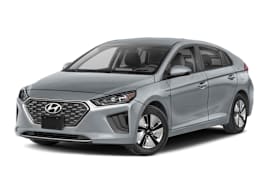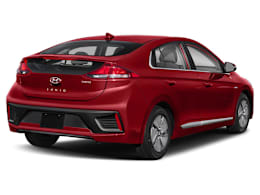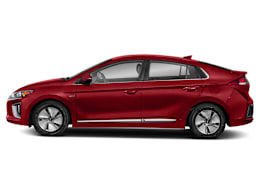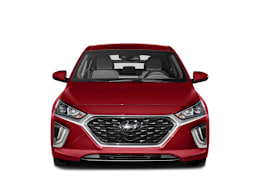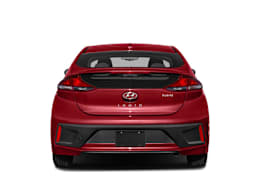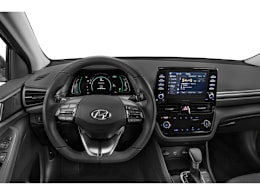Hyundai has given its Ioniq hybrid hatchback a freshening for 2021, most notably updating the brake system and switching to a different tire brand and model. We’re happy to report that the overly long stopping distances we encountered with the 2017 model have improved significantly. Yet its excellent fuel economy of 52 mpg overall remains, showing that good mpg doesn’t have to come at the expense of braking performance.
The numbers speak for themselves: Compared with the 2017 model we tested, the new Ioniq stopped 14 feet shorter on our dry surface from 60 mph (at 130 feet) and 15 feet shorter in the wet—both solid performances. Brake-pedal feel also improved, with less of the awkward, spongy sensation we encountered with the original model.
Most of the other elements in the Ioniq feel similar. The 139-horsepower hybrid powertrain—which combines a 1.6-liter four-cylinder engine with electric drive—gets the car off the line smoothly, and it can drive electric-only at low speeds. Although the power feels adequate in normal driving, and the Ioniq manages to out-accelerate the Toyota Prius from 0 to 60 mph, there isn’t much left in reserve when you need a quick burst of acceleration. We also noticed some occasionally clunky downshifts from the six-speed dual-clutch automatic transmission. A plug-in hybrid version of the Ioniq is also available.
As before, the Ioniq feels reluctant to take corners with any real verve due to some body roll, though it ultimately proved secure when driven to its limits in handling tests around our track. The ride can also get a bit rough and unsettled on bumpy roads, and interior sound insulation seems like an afterthought with noticeable levels of road noise that seem to almost always permeate the cabin.
The driver’s seat is fairly basic but reasonably comfortable, and it at least has two-way lumbar adjustment (the front passenger seat does not). Rear passengers sit low and headroom is snug. Getting in and out of the Ioniq might be a chore for some people, as it sits pretty low to the road. The hatchback configuration gives a generous amount of cargo space, though, and allows the Ioniq to be a practical car, whether you need to haul a bicycle or make a run to your town’s transfer station. Rear visibility is hampered by the two-piece rear window.
The controls are mostly easy to use and Android Auto and Apple CarPlay compatibility come standard.
Forward collision warning, automatic emergency braking with pedestrian detection, lane departure warning, and lane keeping assistance are standard, but buyers need to move up to the second-tier SE trim and above in order to get blind spot warning and rear cross traffic warning.
